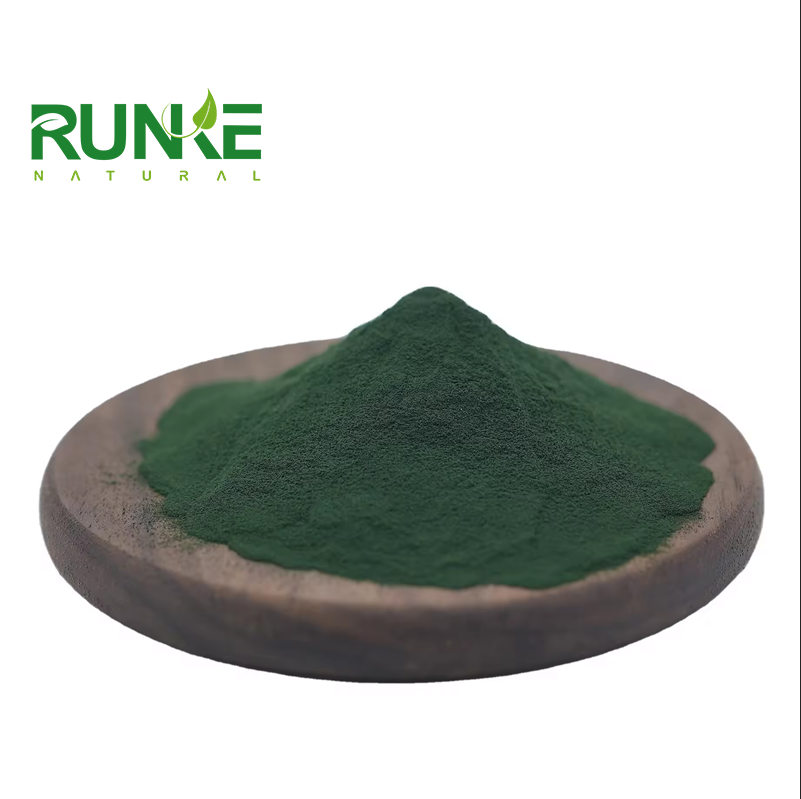Chlorophyll is a fat-soluble green pigment that is mostly found in green plants and seaweed. It can absorb sunlight and promote photosynthesis (to synthesize carbon dioxide and water to produce food for plants).
Its basic structure is a porphyrin ring similar to heme, with the central atom being magnesium instead of iron.
What is the difference between chlorophyll and chlorophyllin?
Chlorophyll supplements are made in part from seaweed (Chlorella), and because natural chlorophyll is less stable, easily degraded, and relatively expensive, most over-the-counter chlorophyll supplements actually contain chlorophyllin as the main ingredient. (chlorophyllin).
Chlorophyllin is a semi-synthetic derivative of chlorophyll (usually taken from the more easily obtained fescue and alfalfa plants) combined with sodium-copper salts, also known as sodium copper chlorophyllin (Sodium Copper Chlorophyllin), which is water-soluble , no need for fat to assist absorption.
What are the empirical effects (benefits) of chlorophyll?
1. Chlorophyll Benefits Allergic Rhinitis
Allergic rhinitis is an under-recognized inflammation of the nasal mucosa defined by at least two nasal symptoms including runny nose, congestion, sneezing, and nasal itching.
It is mainly caused by inhaled allergen reactions mediated by immunoglobulin E (IgE), which can easily lead to work, study, sleep problems and a reduction in children's outdoor activities.
Typical allergens include seasonal pollen and mold, as well as indoor perennial allergens such as dust mites, pets, pests, and some molds.
A randomized, double-blind, placebo-controlled trial (12 weeks, 66 patients with seasonal allergic rhinitis) showed that oral chlorophyll capsules (daily dose 0.7 mg) can reduce the need for additional anti-allergy medication (rescue medication scores (measured by RMSs)). Note 1
2. Chlorophyll prevents aflatoxin-related liver cancer
Aflatoxin is mainly produced by the fungi Aspergillus aflatoxin, Aspergillus parasiticus and Aspergillus nomes. These fungi are parasitic in a variety of foods such as corn, oil seeds, spices, peanuts, nuts, milk and dried fruits, especially Aspergillus aflatoxin. Toxin B1 is the most abundant and most toxic member of the family (it has been classified as a Class A carcinogen by the World Health Organization).
Among the many liver cancer risk factors, hepatitis B and C virus infection, aflatoxin exposure, heavy alcohol consumption, and iron overload are the most common.
Once aflatoxin is ingested, its metabolite AFB1-N7-guanine is considered an important biomarker for determining DNA damage.
A randomized, double-blind, placebo-controlled study (4 months, 180 healthy adults) showed that the urinary AFB1-N7-guanine levels in the chlorophyll group were 55% lower than those in the placebo group.
3. Chlorophyll helps control body odor
The chemical complexity of body odor enables it to convey various biological and social messages. In humans and animals, the signals hidden in body odor are believed to contribute to mate selection, individual identification, kinship detection, and sexual differentiation. .
While body odor can lead to spontaneous attributions of personality traits, unpleasant body odor is generally less popular and is considered a warning sign or indicator of potential health risks, although it may not necessarily directly cause health problems.
A study (with 62 elderly nursing home patients) pointed out that taking chlorophyll not only has a certain effect on controlling body odor and fecal odor, but also reduces the occurrence of constipation and flatulence. Note 3
Another study pointed out that for patients with trimethylamineuria (Trimethylaminuria, also known as stinky fish syndrome, a rare disease in which the body cannot break down trimethylamine), oral administration of chlorophyll can significantly reduce the concentration of trimethylamine in the urine.
4. Chlorophyll improves acne (acne)
Acne (Acne vulgaris) is an inflammatory sebaceous gland disease characterized by blackheads, papules, pustules, inflammatory nodules, epidermal cysts, and pustules. Although it does not affect general health, it can cause scarring and psychological distress in severe cases. Troubled.
Lesions are most common on the face, but the neck, chest, upper back and shoulders may also be affected. More than 80% of teenagers suffer from acne, and 3% of men and 12% of women continue to suffer from acne until they are over 25 years old.
5. Chlorophyll prevents colorectal cancer
Colorectal cancer is the most common malignant disease of the gastrointestinal tract. Its incidence rates rank third and second among male cancers and female cancers respectively. The main risk factors include advanced age, family history, male gender, and lifestyle ( Smoking, high consumption of red and processed meat, obesity, diabetes, and excessive alcohol consumption).
However, it is also one of the most preventable cancers because it almost always begins as benign tumors, also known as tubular adenomas and serrated polyps, and takes many years to develop into colorectal cancer.
Therefore, early detection and removal of precancerous adenomas is crucial to prevent malignant transformation of polyps.
An observational population study (9.3 years of follow-up, 120,852 participants) reported that increased dietary heme iron intake and decreased chlorophyll intake were associated with an increased risk of colorectal cancer in men.
What are the food sources of chlorophyll?
The best sources of chlorophyll are dark green vegetables (broccoli, kale, spinach, wheatgrass, cilantro, leeks, green beans or lettuce) and algae.

Layla Liu
WhatsAPP:+0086 18809263088
Post time: Feb-17-2024


